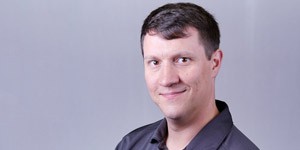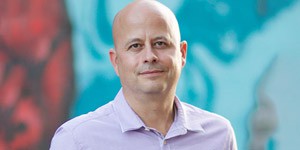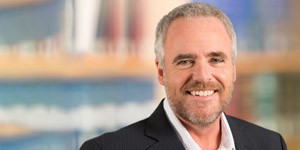By Viola Brugnatelli

Viola Brugnatelli is a neuroscientist and endocannabinologist, she carries out research and teaching on cannabis at the Dept. Of Neuroscience, University of Padua, Italy, and is the co-founder of
Cannabiscienza, an education company for healthcare professionals on the endocannabinoid system and medical cannabis.
A long standing member of the International Cannabinoid Research Society, and Italian Ambassador for the International Association for Cannabis Medicine, Viola's background is in pharmacology labs, specialising in orphan cannabinoid/terpenoid receptors and their signalling in pain and inflammation.
Currently she collaborates with Fundación Canna, the Journal of Cannabinoid Medicine editorial board, and as a guest author for a series of magazines in the field, including Project CBD. Viola
over the years contributed to several CME courses on cannabis, educating MDs and pharmacists worldwide. She is the VP of a non-for-profit that aims to empower women working with plant medicine.
What fascinates her most about the cannabis plant is what we can learn and understand about the endocannabinoid system and how to modulate it in different ways beyond phytocannabinoids. Lately she has been closely working with anaesthesiologists who operate with hypnotherapy to
evaluate the role of the ECS in the ability of altering our states of consciousness without drugs.
Meet the Experts is a series of interviews conducted by experts from the field of Cannabis to world leaders in research and clinical practice of Cannabis as medicine.
Gianpaolo Grassi (1957) is an agricultural scientist with over 40 years experience at the Research Institute for industrial crops in Italy.
Since the early 90’s he dedicates himself to the study of cannabis, cannabinoids and their detection. In 2000 he obtained three new monoecious industrial hemp varieties, the first selected in Italy. Subsequently he registers three other varieties of cannabis used for the production of seeds. His institute is the only research center in Italy authorized by the Ministry of Health for medium to large scale production of cannabis for research purposes.
Dr. Grassi, now in his first year of pension from the institute, is everything but tired of working with cannabis. In this raw, humble and honest interview he passes on what working with cannabis, and the "cannabusiness" taught him.

VB: How and when was your first contact with the cannabis plant?
GG:I was probably 6 or 7 when I first came into contact with the hemp plant.
It happened in one of the last fields where hemp from seed was grown, probably destined for birds feed.
It was hemp from seed because I remember that the space between the rows of plants was such that you could pass through them.
Perhaps it was one of the last crops grown in the Ferrara area, where I am originally from.
VB: What most excites you about cannabis?
GG: The continuous opportunity to obtain useful and innovative things, such as new products, new varieties, new sensations and better health; that to me is concrete, real and true stuff.
VB: How accepting was the Italian landscape of your scientific interest in cannabis and did you feel supported?
GG: Certainly I was not much supported by my facility CREA and consequently from the vigilant Ministry (MiPAAF).
It suffice to say that, during numerous reorganizations of the institution, in a period in which there were concerns about a threat of closure of the Rovigo's office, I realized that Minister Martina's press officer was not even aware that in Rovigo we had been dealing with medical hemp for some time. This person was working for the same ministry (agricultural politics) for over 10 years.
In my career I accumulated a disciplinary measure and I avoided another one that the Director Ida Marandola (Ex General Director of CREA which has been, in 2019, arrested for embezzlement) wanted to apply me at all costs. With three of these measures I would have been fired on the spot.
On a scientific level, I believe that those who know me a little have considered my work discreet and that if something has changed in the Italian hemp scene, a small part was caused by my activism in the various associations and the work I carried out.
VB: Have you seen a greater opening over the years?
GG: Yes. There is no doubt about this. Initially, the law enforcement imposed every hemp field to be fenced and illuminated during the night, maintaining constant vigilance. I managed to convince them that this was not possible because if you kept the light on even during the night the plants would never flower and luckily this made them give up at some point.
Witnessing the Italian Ministry of Health promoting the pilot program for the introduction of medicinal cannabis was a huge step forward.
Being able to promote a post-graduate course in a university that is certainly not liberal and progressive like that of Padua was another important event, thanks in this case to Prof. Gastone Zanette, also a dear friend.
VB: CREA-CIN, for which you were the first researcher for many years, was the only center in Italy authorized by the Ministry to grow cannabis for research purposes. Have you felt supported by the institutions over the years?
GG: Yes, partly. For example, my requests have almost always been heard.
I know that despite not an ideal one, it could have been an even worse scenario.
For example: Germany, which today is blessed with a fair level of acceptance of cannabis, until recently and perhaps still up to today, demands that students who want to do research on industrial hemp must still keep the plants locked up and not even in a greenhouse, but inside a climatic cabinet housed within a solid and controlled building.
In France it is even worse the scenario for researchers and in many other Countries the rules uncertainty and the institutional hypocrisy are sadly rampant.
VB: During your business you have carried out many projects on cannabis. What would you consider your greatest professional satisfaction so far?
GG: Certainly, to be able of making available for patients with serious diseases the only two varieties that can be used as a medicine produced by the Italian state. Perhaps only few people within the field know my work contribution in the introduction of medicinal Cannabis in Italy.
The MiPAFF and consequently the CREA did not have a great visibility in the project and the choice of variety's names, perhaps because those entities felt almost ashamed of declaring publicly of working on this plant.
Personally I felt grateful of the reactions and feedback of some Italian pharmacists, whom spontaneously expressed to me patients results and successes and therefore confirmed the good work we have done.
VB: Let's jump right into some plant-talk. Which cultivation method do you prefer?
GG: Certainly working indoors is more congenial to a researcher. Nature and the outdoors are much more variable and uncontrollable so sometimes you suffer disappointments and heavy failures, despite working hard and intensely to complete important projects.
What I would have wished for was that the yellow-stemmed variety called Carmaleonte received more interest from investors who could reinitiate the supply chain to which hemp is most historically linked to: textile field.
I remember that since 1995 what all the researchers involved aspired to was to find the right solution to resume growing hemp for textile purposes in an economically sustainable way.
I'm not so self-centered as to think that with my variety alone it would have been possible to remedy all the issues related with the relaunch of a supply chain as complex as the textile one, but at least some other attempts could have been made in my opinion. Let's just hope it will be for another time.
VB: Do you use pesticides? If so, what?
GG: Since I have the opportunity to work in a greenhouse that is totally at my disposal at the Canvasalus company, I always try to avoid wearing glasses, goggles, overalls or even gloves. I don't do this because I want to hurt myself, but because I apply totally harmless and natural products.
Since I stay in the same greenhouse hours at the time and of course I also get to breathe the air of this environment, I would be an idiot and a fool to contaminate the very place where I and my son work.
Then it must be said that the health measures officially admitted for hemp in Italy can be counted on the tip of a sole finger: copper; so to be totally within the rules, only water and copper should be applied.
In Italy, however, we abound with imagination and "craftiness" and so we manage to get by especially with the means applied by organic farming. Sometimes they disappoint and are only partially effective, but I believe that certain compromises are inevitable and we must also take into account the needs of the mites or aphids, which also want to take advantage of the good fortune of coming into this planet.
VB: What would be your advice to the many cannabis growers reading this interview?
GG: Hold on, do not get discouraged, use a lot of imagination and intelligence that has been given to us and make the best of bad luck, perhaps avoid voting for right-wing parties. I can still afford to resist because I perceive a pension, so some might say: "oh well, everyone would talk like that if they enjoyed certain privileges".
I think this is completely true and therefore for those less fortunate than me I suggest you take the step commensurate with the length of your legs, weigh carefully the people you meet; learn to navigate people of the world of cannabis because it is full of braggers, boasters, approximate and profiteers.
This is of course not always the case: I have also met people whom for years have stood up to the challenges of hemp, they are generous and honest. There are not many of these individuals, but rest assured that they exist; make sure to create a network and collaborate with each other, because alone you won't go neither fast nor far.
As for compliance with the laws: respect them, but try to interpret them so that you can move forward and try to get maximum satisfaction in what you can do. I have never had disappointments or betrayals from this plant, sometimes some strong slap that was remedied with a good sleep, but always demonstrations of strength and sincerity.
VB: How do you see the international development of cannabis versus that in Europe?
GG: The question has two implications. The international one will be faster and more positive. No one will be able to stop the advance of cannabis because with the Internet no one will be able to hide the true and real things that orbit around cannabis as happened in the mid-1900s.
At the European level I am very confident of some progress, mainly because a valid and intelligent woman has a role that can contribute favorably to the progress of industrial hemp and also preserve that for medical uses.
What worries me is that creeping and insidious nationalist sentiment that accompanies conservative and fascist political positions.
I hope that the general political orientation of Europe will move away from this, although over the years even democratic parties did not show much courage when it comes to cannabis.
VB: Through your work you have created an immense cultural heritage, both directly and indirectly; many good scientists have been your students or interns. Could you share with us some anecdotes about what teaching cannabis to the new generations has meant for you?
GG: Without false modesty, I would say that the term "immense" is a bit exaggerated, I would use "discreet" instead. I did not aspire to be recognized by others, I mainly had to satisfy my personal judgment.
Having said that, I believe that doing well the job of the teacher is a very difficult thing. I probably met only two or three true 'masters' in my entire life. Surely I myself could have done more and better.
The guys who got out of my lab overall had good opportunities to enter the work field.
Sebastién founded an association for patients in need of medicinal cannabis in France and established a company that produces analytical tests for cannabinoids distributed all over the world.
Salvatore together with his father opened the first clinic in Sicily that prescribed and distributed medical cannabis as well as various hemp products. Davide specialized and obtained a PhD on hemp and opened a company with other partners and is currently selecting and producing Cannabis light.
Some trainees went to analytical laboratories, and a couple of them even to one of the very few accredited laboratories able to carry out tests on cannabinoids in food. Piercarlo became an high school professor, but sadly cancer took him away prematurely.
Someone also stole some experiences from me and went to deposit them at the CPVO in his name. Surely if we hear his version of events I were the thief, but both mine and his word are equally valid and the proof of the veracity of one or the other version is not available. However my varieties are out in the open and can be analyzed and compared, his own I believe would proove difficult to test.
The most gratifying and welcome reward for my work activities has favorably materialized with the inclusion of Gianmaria in the only Italian center that can produce medicinal Cannabis.
In short, I would say that I have sown some seeds and the fruits are starting to show, especially thanks to their own doing, of course.
VB: You are now retired, but cannabis does not stop being your passion. How do you see your role in this field and how do you continue your legacy?
GG: Among the many lucky things that happened to me, it stands out having had two wonderful children, Giulio and Lisa. Lisa is a student and Giulio wants to "do it immediately and do it quickly". He will make it without a doubt, and has already taken decisive steps to carve out the future that he deems most suitable for himself.
I intend to accompany him on this journey and share some more life satisfactions with him.
One was definitely opening the way for registering varieties at a European level using feminized seeds. We have an analysis laboratory that allows us to respect at best the rules that the law imposes on us.
I am happy to say that there are now 10 varieties deposited and approved by the CPVO despite the obstinate ostracism and stubborn aversion of the Italy's official of the Ministry of Health responsible for granting authorizations to export plants or cuttings for breeding vegetative varieties. With patience, together with our partner, the company Enecta, we were able to get to the test center.
VB: Thank you for your powerful insight Dr. Grassi and for the precious work you are carrying out.


